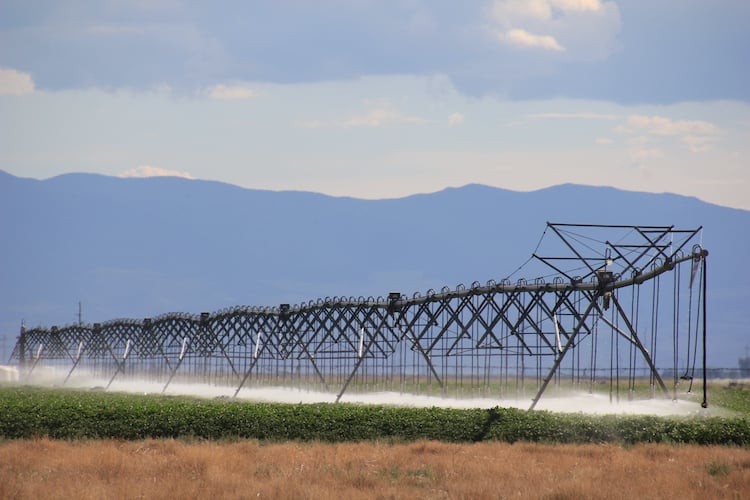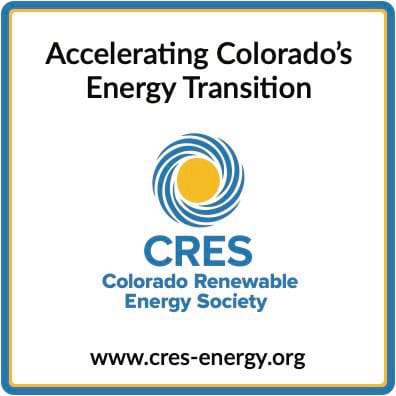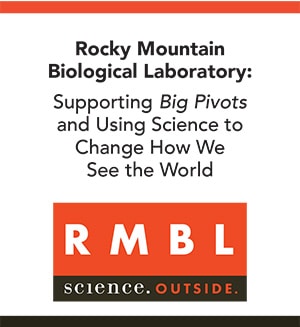Colorado River rightfully gets attention. So should the groundwater depletion underway in the Republican and other basins
by Allen Best
Woes of the Colorado River have justifiably commanded broad attention. The slipping water levels in Lake Powell and other reservoirs provide a compelling argument for changes. How close to the cliff’s edge are we? Very close, says a new report by the Center for Colorado River Studies.
But another cogent — and somewhat related — story lies underfoot in northeastern Colorado. That’s the story of groundwater depletion. There, groundwater in the Republican River Basin has been mined at a furious pace for the last 50 to 60 years.
Much of this water in the Ogallala aquifer that was deposited during several million years will be gone within several generations. In some places it already is. Farmers once supplied by water from underground must now rely upon what falls from the sky.
In the San Luis Valley, unlike the Republican River Basin, aquifers can be replenished somewhat by water that originates from mountain snow via canals from the Rio Grande. The river has been delivering less water, though. It has problems paralleling those of the Colorado River. Changes in the valley’s farming practices have been made, but more will be needed.
In a story commissioned by Headwaters magazine (and republished in serial form at Big Pivots), I also probed mining of Denver Basin aquifers by Parker, Castle Rock and other south-suburban communities.
Those Denver Basin aquifers, like the Ogallala, get little replenishment from mountain snows. Instead of growing corn or potatoes, the water goes to urban needs in one of America’s wealthier areas.
Parker and Castle Rock believe they can tap groundwater far into the future, but to diversify their sources, they have joined hands with farmers in the Sterling area with plans to pump water from the South Platte River before it flows into Nebraska. This pumping will require 2,000 feet of vertical lift across 125 miles, an extraordinary statement of need in its own way.
Like greenhouse gases accumulating in the atmosphere, these underground depletions occur out of sight. Gauges at wellheads tell the local stories, just like the carbon dioxide detector atop Hawaii’s Mauna Loa has told the global story since 1958.
Colorado’s declining groundwater can be seen within a global context. Researchers from institutions in Arizona, California, and elsewhere recently used data from satellites collected during the last two decades. The satellites track water held in glaciers, lakes, and aquifers across the globe. In their study published recently in Science Advances, they report that water originating from groundwater mining now causes more sea level rise than the melting of ice.
“In many places where groundwater is being depleted, it will not be replenished on human timescales,” they wrote. “It is an intergenerational resource that is being poorly managed, if managed at all, by recent generations, at tremendous and exceptionally undervalued cost to future generations. Protecting the world’s groundwater supply is paramount in a warming world and on continents that we now know are drying.”
This global perspective cited several areas of the United States, most prominently California’s Central Valley but also the Ogallala of the Great Plains.
In Colorado, the Ogallala underlies the state’s southeastern corner, but the main component lies in the Republican River Basin. The river was named by French fur trappers in the 1700s, long before the Republican Party was organized. The area within Colorado, if unknown to most of Colorado’s mountain-gawking residents, is only slightly smaller than New Jersey.
A 1943 compact with Nebraska and Kansas has driven Colorado’s recent efforts to slow groundwater mining. The aquifer feeds the Republican River and its tributaries. As such, the depletions reduce flows into down-river states.
Farmers are being paid to remove land from irrigation with a goal of 25,000 acres by 2030 to keep Colorado in compliance. So far, it’s all carrots, no sticks. Colorado is also deliberately mining water north of Wray to send to Nebraska during winter months. This helps keep Colorado in compact compliance. So far, these efforts have cost more than $100 million. The money comes from self-assessments and also state and federal grants and programs.
In some recent years, more than 700,000 acre-feet of water have been drafted from the Ogallala in the Republican River Basin. To put that into perspective, Denver Water distributes an average annual 232,000 acre-feet to a population of 1.5 million.
Hard conversations are underway in the Republican River Basin and in the San Luis Valley, too. They will get harder yet. Sixteen percent of all of Colorado’s water comes from underground.
The Colorado River has big troubles. It’s not alone.
For stories in the series, see:
Part I: Hard questions about groundwater mining in Colorado: It’s going fast! What needs to be done in the Republican River Basin?
Part II: South Metro cities starting to diversify water sources: Castle Rock and Parker 25 years ago were almost entirely dependent upon groundwater. They are diversifying, and one plan is to import water from far down the South Platte River Valley.
Part III: 20th century expansions and 21st century realities in the San Luis Valley: The solutions seem fairly obvious. Executing them is another matter.
Part IV: Balancing demands of today and tomorrow: Are we doing better than kicking the can down the road?
How much water remains in Baca County?: Study commissioned by legislators uses newer techniques than were available in 2002.
- Another (near) Lake Wobegone year - November 15, 2025
- Bryan Hannegan & the bigger leagues - November 15, 2025
- After a misstep about nuclear, DIA now looking at all energy options - November 13, 2025







I know I sound like a broken record. So just a more recent report from California where similar issues exist:
https://calmatters.org/environment/water/2025/09/solar-fallowed-farmland-wicks
Harvest electrons.
It seems that the ag water and rural leaders or influencers are trying to keep this off the table. NE CO is not the optimum solar location. It might need powerline upgrades for more wind. But solar & storage can complement wind w/o much new transmission.
A recent little CO video makes the case for sheep or cattle under solar. Sure, if it doesn’t add too much to the $/kWh. If solar is over irrigated land, can we reduce the water truly significantly while maintaining yields? Otherwise just fallow one acre out of 2 or 3 and keep production on the others. (And please, let’s figure out how to sell that electricity to the neighbors for cheap when the wind is blowing or sun is shining.)
Taking groundwater is so different than taking river water. With the river, each year it’s pretty clear when we run out; when all that’s left is a trickle in the cobbles. With groundwater, just keep pumping harder until the land subsides or the bottom is reached which might be decades.